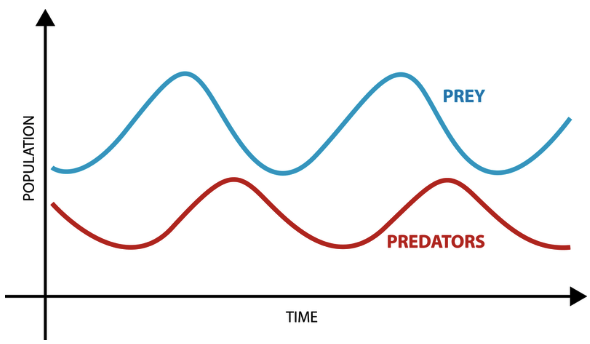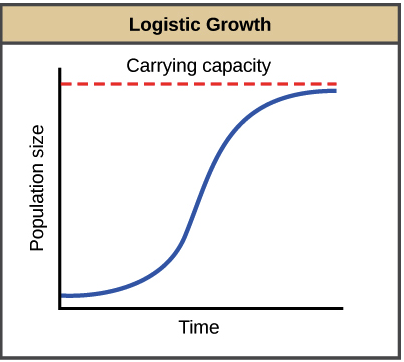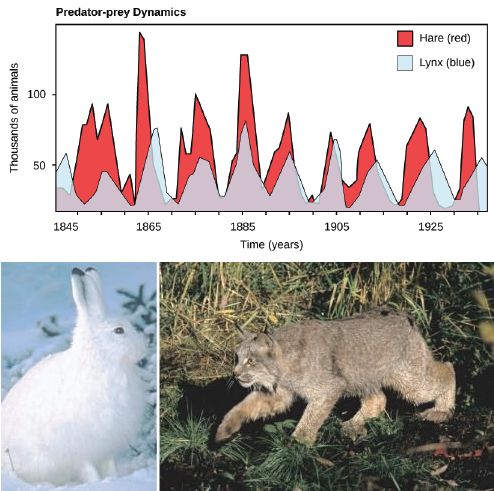2 Density-dependent Inhibition Is Explained by Which of the Following
Most recently Welker and colleagues have provided compelling evidence that the density of synapses actually increases following repetitive stimulation of a whisker. At this point normal cells will stop replicating.

Population Regulation Density Dependent Factors Ecology Article Khan Academy
Normal cells proliferate until they reach a finite cell density which is determined in part by the availability of growth factors added to the culture medium usually in the form of serum.

. A primary distinction between cancer cells and normal cells in culture is that normal cells display density-dependent inhibition of cell proliferation Figure 158. This process continues until the cells occupy the entire substratum. Density-dependent inhibition is explained by which of the following.
SYI1H2 EK What factors limit population sizes. Density dependent inhibition is the process exhibited by most normal anchorage dependent animal cells in culture that stop dividing once a critical cell density is reached. A growth inhibiting signal is sent to both cells preventing them from dividing.
16 Density-dependent inhibition is explained by which of the following. A a local deficiency of nutrients. Contact inhibition is a regulatory mechanism that functions to keep cells growing into a layer one cell thick a monolayer.
Density-dependent inhibition is a phenomenon in which crowded cells stop dividing at some optimal density and location. A As cells become more numerous they begin to squeeze against each other restricting their size and ability to produce control factors. B As cells become more numerous the cell surface proteins of one cell contact the adjoining cells and they stop dividing.
Up to 10 cash back Density-dependent inhibition occurs when cells grow to a limited density then growth becomes inhibited possibly by cell-cell contacts. For filarial worms density-dependent processes can act at the hostvector interface or within the hostvector life-cycle stages. A As cells become more numerous they begin to squeeze against each other restricting their size and ability to produce control factors.
These resources such as. Density-dependent processes can act across multiple points of the macroparasite life cycle. As cells become more numerous the cell surface proteins of one cell.
B As cells become more numerous they stop dividing. Asked Sep 11 2016 in Biology Microbiology by AshleyWY. Using serum as a broad-spectrum and EGF as a more specific inducer of ERK12 kinase activity we show here that ERK12 activation by both inducers and serum-induced p38 MAP kinase activities are inhibited by wt Pnck expression in cells at high cell density and that this inhibition is dependent on Pnck kinase activity.
Exponential logistic growth. The critical density is considerably higher for most cells than the density at which a mono-layer is formed. This phenomenon involves binding of a cell-surface protein to its counterpart on an adjoining cells surface.
Tumor cells have often lost density-dependent inhibition. Density-dependent inhibition is a phenomenon in which crowded cells stop dividing at some optimal density and location. Biology questions and answers.
C As cells become more numerous the protein kinases they produce begin to compete with each other. Density-Dependent Factors Defined. A density dependent inhibition is when cells become more and more numerous the required growth factors and nutrients become insufficient making cell growth difficult.
A As cells become moe numerous te level of waste products increases eventually slowing down metabolism 41h BAs cels become moe numerous the peotein kinases they peoduce begin to compete with each other such that the peoteins. This phenomenon involves binding of a cell-surface protein to its counterpart on an adjoining cells surface. Furthermore they provide intriguing.
B As cells become more numerous the cell surface proteins of one cell contact the adjoining cells and they stop dividing. If a cell has plenty of available substrate space it replicates rapidly and moves freely. Density-dependent inhibition is explained by which of the following.
Density-dependent inhibition involves reduction in cell division when a population of cells acquires certain density. This is the currently selected item. It leads to contact between cell surface proteins of adjoining cells that gives negative signals for cell division and thus prevent cell division.
37 Density-dependent inhibition is explained by which of the following. 7 of 9 41 Density-dependent inhibition is explained by which of the follewing. Thus the correct answer is as cells become more numerous the cell surface proteins of one cell contact the.
A As cells become more numerous they restrict their size and ability to produce control factors. B cells innate sense of knowing when the organ of which they are a part has no need for additional cells. During an initial assessment a client reports the following behaviors.
Exponential and logistic growth in populations. In their seminal studies Micheva and Beaulieu have shown that the density of inhibitory spinous synapses in layer IV barrels is reduced following postnatal whisker removal. What is probably the main factor responsible for the phenomenon of density-dependent inhibition.
Research Update TRENDS in Neurosciences Vol25 No11 November 2002 541 Research News Use-dependent inhibition of dendritic spines Asaf Keller Dendritic spines are now known to be the small protrusions along the dendrites have shown that the number and subject to use-dependent plasticity that of many types of neurons. Density dependent factors affect a population through increasing or decreasing birth and death rates in a way that is directly related to the density of the population. Density-dependent inhibition involves reduction in cell division when a population of cells acquires certain density.
When a population of organisms becomes too large the individuals will suffer because there will not be enough resources for everyone. At the hostvector interface. It leads to contact between cell surface proteins of adjoining cells that gives negative signals for cell division and thus prevent cell division.
In macroparasite life cycles density-dependent processes can influence parasite fecundity survival and establishment. Google Classroom Facebook Twitter. Social inhibition hypersensitivity to negative evaluation fear of criticism and social ineptitude.
Unlike density independent factors which are not tied to the population density density dependent factors change how they affect the population as the population changes in size.

Quia 9ap Chapter 12 The Cell Cycle Detailed

Population Regulation Density Dependent Factors Ecology Article Khan Academy

Population Regulation Density Dependent Factors Ecology Article Khan Academy
No comments for "2 Density-dependent Inhibition Is Explained by Which of the Following"
Post a Comment